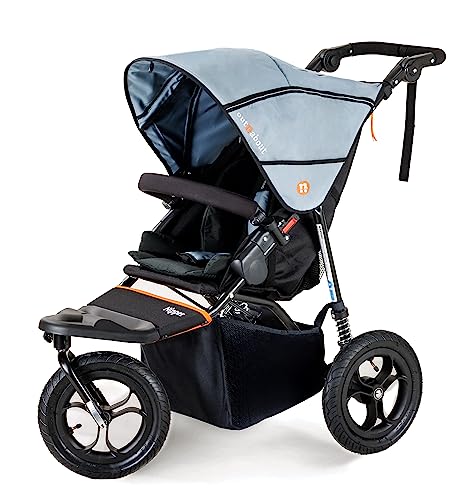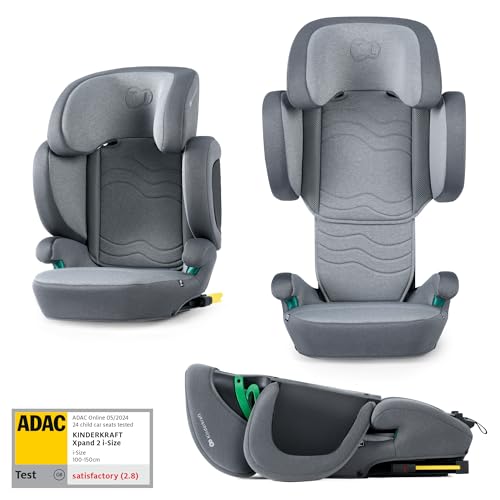
Pushchairs and Prams: A Comprehensive Guide for Modern Parents
In the world of parenting, finding the right pushchair or pram can be a daunting task. With a plethora of options available in the market, each claiming to be the best, it's essential to understand the differences, features, and benefits of these products to make an informed decision. This guide aims to provide a detailed overview of pushchairs and prams, helping parents navigate through the selection process and choose the perfect fit for their needs.
What are Pushchairs and Prams?
Pushchairs and prams are essential baby transport devices designed to make life easier for parents. While the terms are often used interchangeably, they do have distinct characteristics:

- Pushchairs: These are generally more lightweight and compact, suitable for daily use. They are often easier to fold and store, making them ideal for urban environments, public transportation, and travel.
- Prams: Prams are typically designed for newborns and young infants. They offer a more spacious and comfortable design, often with a lie-flat position. Prams are generally bulkier and less portable but provide a more serene and luxurious experience for the baby.
Key Features to Consider
When choosing a pushchair or pram, several key features should be evaluated:
Weight and Portability
- Pushchairs: Lightweight and easy to fold, making them ideal for travel and storage.
- Prams: Heavier and bulkier, but often come with a built-in carrycot for newborns.
Seating and Reclining Options
- Pushchairs: Often come with a multi-recline position, allowing the baby to sit up or lie down.
- Prams: Typically offer a lie-flat position, which is crucial for newborns as it ensures proper support and comfort.
Suspension and Maneuverability
- Pushchairs: Usually have better suspension and maneuverability, making them easier to navigate through rough terrain and crowds.
- Prams: May have less advanced suspension but provide a smoother ride due to their larger wheels.
Storage and Accessory Options
- Pushchairs: Often come with a smaller basket but are more versatile in terms of accessories.
- Prams: Have larger storage baskets and are often compatible with car seats and other baby gear.
Price and Budget
- Pushchairs: Generally more affordable, with a wide range of price points.
- Prams: Tend to be more expensive, especially those with premium features and materials.
Types of Pushchairs and Prams
Umbrella Strollers
- Description: Compact and lightweight, often resembling an umbrella when folded.
- Best For: Parents who need a quick and easy-to-carry option for short trips or travel.
- Pros: Lightweight, easy to fold, portable.
- Cons: Limited storage, less comfortable for babies.
Travel Systems
- Description: A combination of a pushchair, car seat, and carrycot, providing a versatile solution for different needs.
- Best For: Families who require a comprehensive system that can adapt to various situations.
- Pros: Versatile, multiple configurations, convenient for travel.
- Cons: Bulkier, more expensive.
Double and Triple Strollers
- Description: Designed for multiple children, these strollers often have a side-by-side or tandem configuration.
- Best For: Families with more than one child.
- Pros: Space-efficient, suitable for multiple children.
- Cons: Heavier, less maneuverable.
All-Terrain Prams
- Description: Built to handle rough terrains and outdoor activities, these prams often have larger wheels and better suspension.
- Best For: Active parents who enjoy outdoor activities like hiking and jogging.
- Pros: Durable, excellent suspension, suitable for various terrains.
- Cons: Heavier, more expensive.
City Prams
- Description: Compact and maneuverable, designed for urban environments and public transportation.
- Best For: Parents living in cities with limited space and frequent use of public transit.
- Pros: Easy to fold, lightweight, compact.
- Cons: Smaller storage basket, may have less advanced features.
Top Brands and Models
Bugaboo
- Models: Bugaboo Bee, Bugaboo Buffalo, Bugaboo Donkey
- Features: High-quality materials, excellent suspension, modular design.
- Price Range: Mid to high range.
Joie
- Models: Joie Rockaby, Joie Sienna, Joie Nook
- Features: Affordable, compact, easy to use.
- Price Range: Low to mid range.
UppaBaby
- Models: UppaBaby Vista, UppaBaby Cruz, UppaBaby Minu
- Features: Sturdy build, versatile configurations, premium accessories.
- Price Range: Mid to high range.
MBB (Maclaren)
- Models: Maclaren Techno XLR, Maclaren Quest, Maclaren Tripp Trapp
- Features: Lightweight, easy to fold, durable.
- Price Range: Low to mid range.
Silver Cross
- Models: Silver Cross Wave, Silver Cross Surf, Silver Cross Explorer
- Features: Classic design, high-quality materials, excellent comfort.
- Price Range: High range.
How to Choose the Right Pushchair or Pram
Assess Your Needs
- Consider your lifestyle, living environment, and typical activities.
- Determine if you need a lightweight, compact option or a more robust, spacious one.
Test the Product
- Try out different models in store or through online reviews.
- Pay attention to how easy it is to fold, maneuver, and use on a daily basis.
Check Compatibility
- Ensure the pushchair or pram is compatible with your car seat and other baby gear.
- Look for models that offer a range of accessories, such as a cup holder, changing mat, and rain cover.
Consider Safety Features
- Look for a five-point harness, secure braking system, and sturdy frame.
- Check for any safety certifications or ratings.
Evaluate Durability and Maintenance
- Choose a brand known for its durability and reliability.
- Consider the ease of cleaning and maintaining the product.
FAQs
Q: What is the main difference between a pushchair and a pram?
- A: Pushchairs are generally lighter and more compact, making them easier to fold and store. Prams are larger and more comfortable, often designed for newborns and young infants, with a lie-flat position.
Q: Are all pushchairs and prams suitable for newborns?
- A: Not all pushchairs are suitable for newborns, especially those that do not offer a lie-flat position. Prams are generally more suitable for newborns as they provide better support and comfort.
Q: How often should I replace my pushchair or pram?
- A: With proper care, a high-quality pushchair or pram can last several years. However, it's a good idea to replace it if you notice significant wear and tear, or if it no longer meets your changing needs.
Q: What safety features should I look for in a pushchair or pram?
- A: Key safety features include a five-point harness, secure braking system, and a sturdy frame. Additionally, look for products that meet safety standards and have been tested for durability.
Q: Can I use a travel system for more than one child?
- A: Yes, many travel systems can be adapted to accommodate multiple children by adding a second seat or a carrying accessory. However, it's important to check the specific model for its capabilities.
Q: Are all-terrain prams suitable for everyday use in the city?
- A: While all-terrain prams can be used in the city, they may be bulkier and less maneuverable compared to city prams. Consider your specific needs and environment when making a decision.
Choosing the right pushchair or pram is a crucial decision for any parent. By understanding the differences between pushchairs and prams, evaluating key features, and considering your specific needs, you can find the perfect solution for your family. Whether you're looking for a lightweight, compact stroller for daily use or a luxurious pram for your newborn, the market offers a wide range of options to suit every lifestyle and budget. Always prioritize safety, comfort, and practicality to ensure a smooth and enjoyable experience for both you and your baby.
Additional Tips
- Research Thoroughly: Read reviews, compare features, and consult with other parents to gather insights.
- Test Before Buying: If possible, test the pushchair or pram in-store to ensure it meets your requirements.
- Consider Future Needs: Think about how your needs might change as your baby grows and choose a product that can adapt to these changes.
- Check Return Policies: Ensure the retailer offers a generous return policy in case the product doesn't meet your expectations.
By following these guidelines, parents can make an informed and confident purchase, ensuring they have the right baby transport solution for their unique circumstances.







